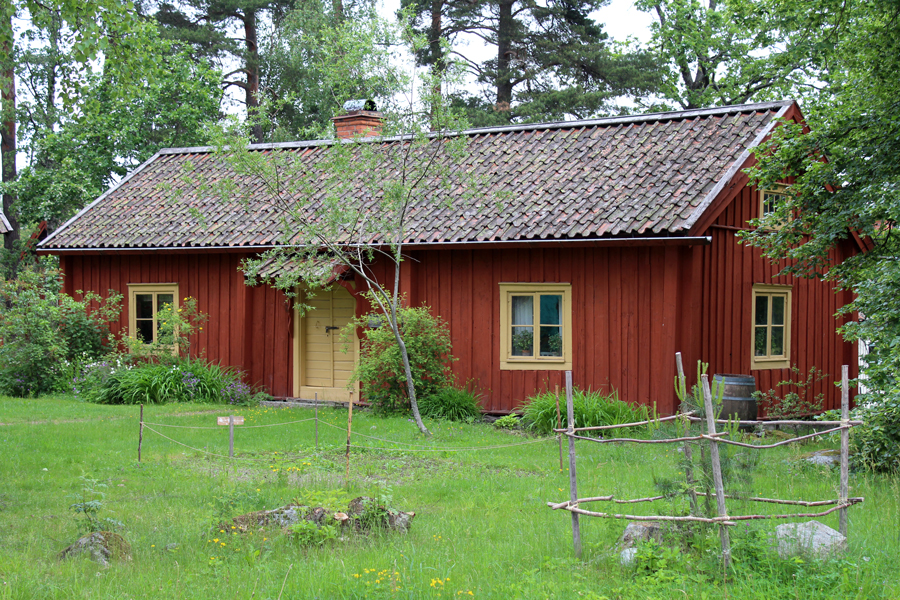The Vicarage

The vicarage comes from Ytter-Åby in Lillhärad Parish. It was the home of the parish vicar and his family.
Vicars usually lived on farms with animals, cropland and pasture land. Earnings from the farm were considered part of the vicar’s salary.
Vicars were often skilled cultivators in fields and gardens. They were educated in botany and medicine. Vicars shared their cultivation skills with local farmers.
The Work of a Vicar
The vicar was busy with church-related duties including church services, baptisms, weddings and funerals. But he also did many other things. He reported to public authorities about the congregation and represented the congregation when dealing with public authorities.
The vicar also spread the word about new governmental regulations and laws. The vicar was also a conveyer of news. From the pulpit, he read messages from the king and other public officials. He could talk knowledgably about events in Sweden and in the world at-large.
The vicar headed the Parish Meeting. A representative from every farm in the parish sat on the Parish Meeting. A parish was an area comprising several villages and a shared church.
The Parish Meeting met twice a year. It discussed and decided church-related matters as well as issues surrounding care of the poor and the sick and education.
The vicar held catechetical meetings with everyone who lived in the parish. The catechetical meeting was held at the farmer’s home. The vicar checked if family members could read and understand the Lutheran Catechism and other religious scriptures. The vicar noted the results in the catechetical meeting register, which listed all members of the family including servants. It showed when they were born and baptised, when they married, how they had performed during the catechetical meeting, personality traits and when they moved or died. After the catechetical meeting, food and drink were served.
Church Stables
The Museum has two church stables. The stables was situated near the church. Horses could rest here while people attended church.
The single-stall building was built in the 1760s for the owner of the Skultuna forge. The other building, from Norrby in Sala Parish, has several stalls and could be used by the public.




